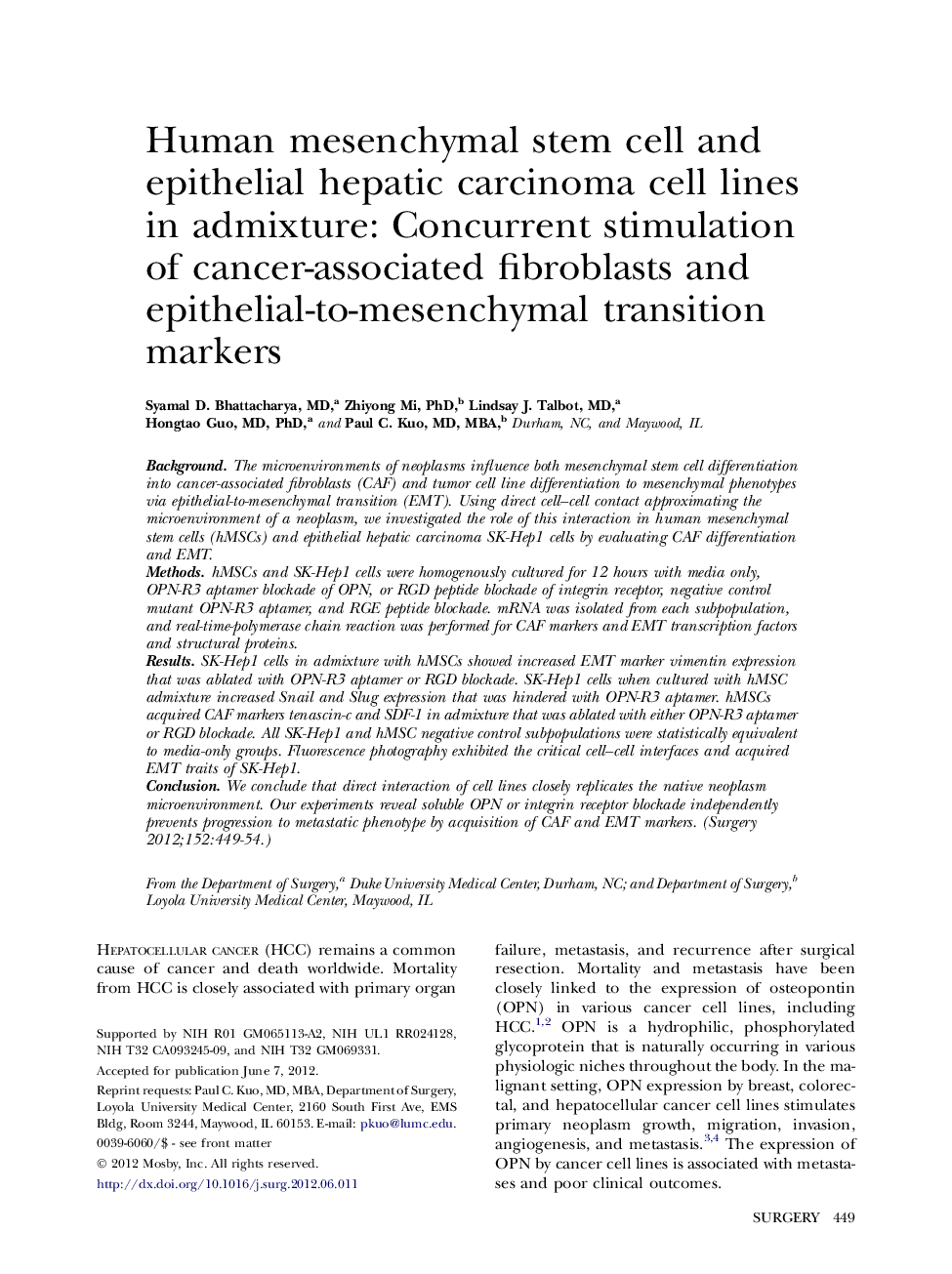| Article ID | Journal | Published Year | Pages | File Type |
|---|---|---|---|---|
| 4308366 | Surgery | 2012 | 6 Pages |
BackgroundThe microenvironments of neoplasms influence both mesenchymal stem cell differentiation into cancer-associated fibroblasts (CAF) and tumor cell line differentiation to mesenchymal phenotypes via epithelial-to-mesenchymal transition (EMT). Using direct cell–cell contact approximating the microenvironment of a neoplasm, we investigated the role of this interaction in human mesenchymal stem cells (hMSCs) and epithelial hepatic carcinoma SK-Hep1 cells by evaluating CAF differentiation and EMT.MethodshMSCs and SK-Hep1 cells were homogenously cultured for 12 hours with media only, OPN-R3 aptamer blockade of OPN, or RGD peptide blockade of integrin receptor, negative control mutant OPN-R3 aptamer, and RGE peptide blockade. mRNA was isolated from each subpopulation, and real-time-polymerase chain reaction was performed for CAF markers and EMT transcription factors and structural proteins.ResultsSK-Hep1 cells in admixture with hMSCs showed increased EMT marker vimentin expression that was ablated with OPN-R3 aptamer or RGD blockade. SK-Hep1 cells when cultured with hMSC admixture increased Snail and Slug expression that was hindered with OPN-R3 aptamer. hMSCs acquired CAF markers tenascin-c and SDF-1 in admixture that was ablated with either OPN-R3 aptamer or RGD blockade. All SK-Hep1 and hMSC negative control subpopulations were statistically equivalent to media-only groups. Fluorescence photography exhibited the critical cell–cell interfaces and acquired EMT traits of SK-Hep1.ConclusionWe conclude that direct interaction of cell lines closely replicates the native neoplasm microenvironment. Our experiments reveal soluble OPN or integrin receptor blockade independently prevents progression to metastatic phenotype by acquisition of CAF and EMT markers.
